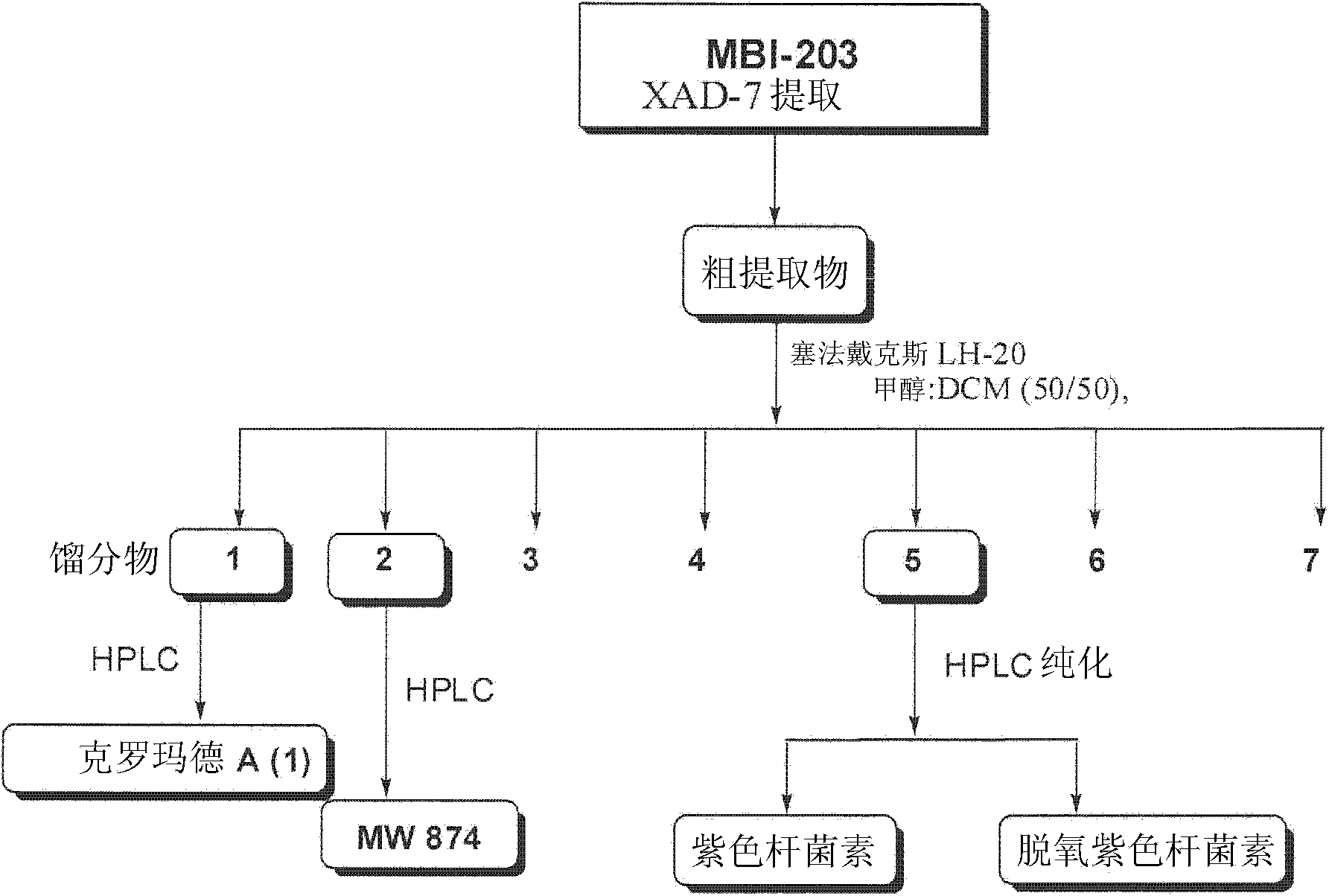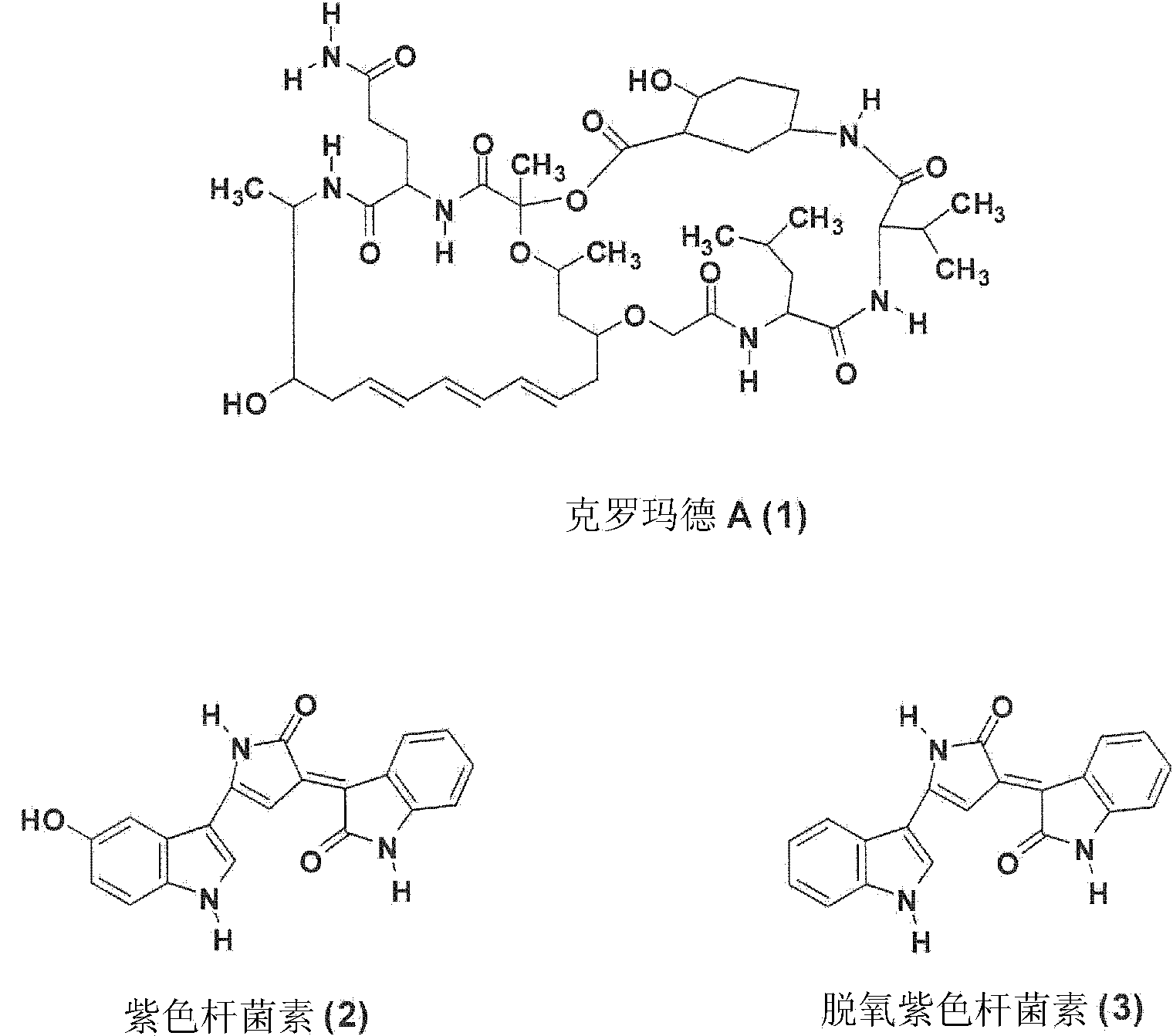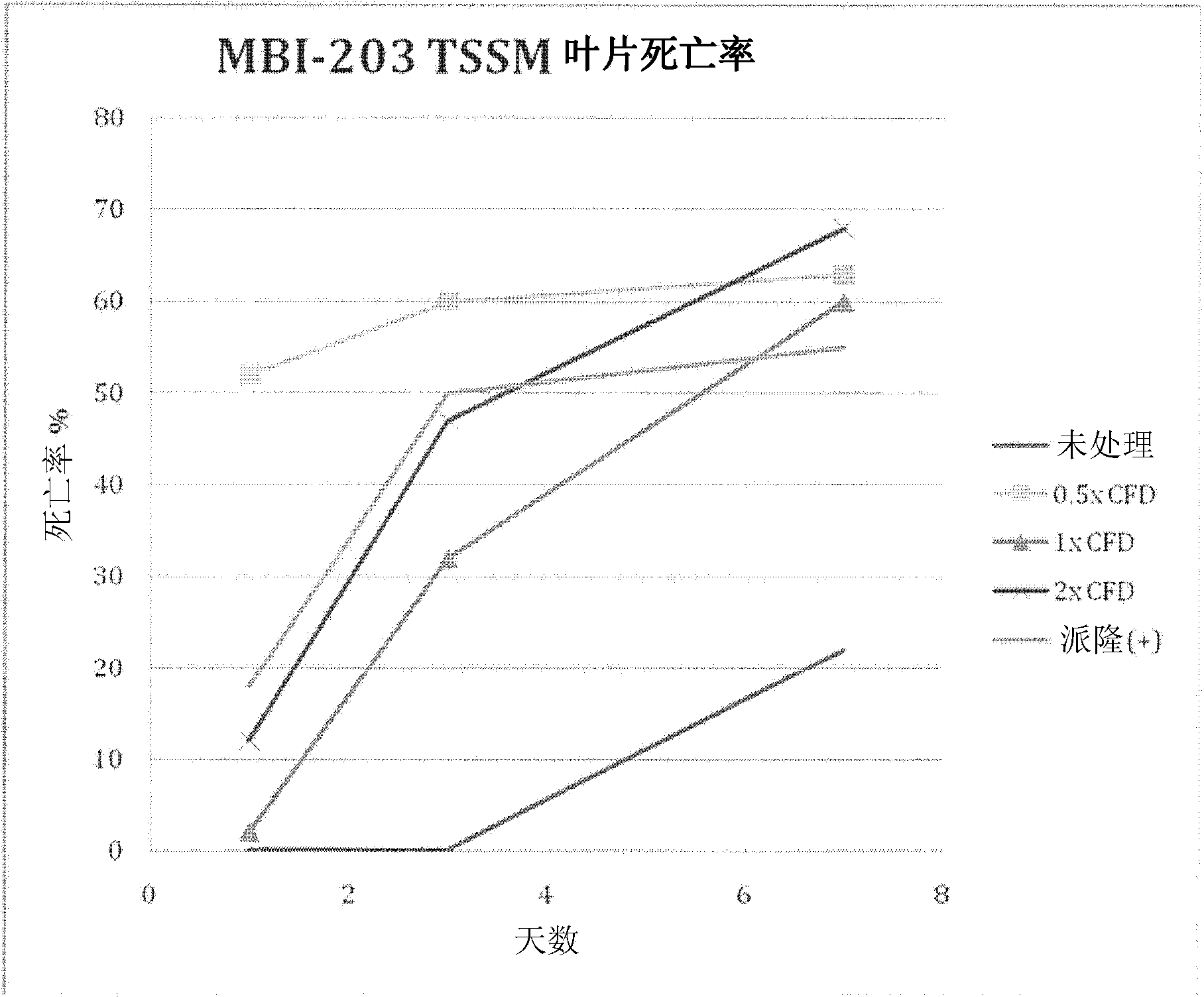Chromobacterium formulations, compostions, metabolites and their uses
A technology of chromobacteria and metabolites, applied in the formulation, components, metabolites and application fields of chromobacter, can solve problems such as harm to human health and difficulty in eradicating Salmonella
- Summary
- Abstract
- Description
- Claims
- Application Information
AI Technical Summary
Problems solved by technology
Method used
Image
Examples
example
[0141] Above-mentioned composition is not limited in the following application examples, these examples only provide different concrete examples, but not limited to the related material, condition, weight ratio, process parameter and similar content etc. that the patent request of the present invention enumerates.
example 1
[0142] Example 1: Extraction of Cromard, Deoxyviorin and Violacein from Chromobacterium Subisga
[0143] The following steps were used to purify the compound from the culture broth of Bacillus albicans Subis:
[0144] The culture broth was taken from a 10-L fermentation broth of Chromobacterium subisga, passed through Amberlite XAD-7 resin only (Asolkar et al., 2006) at a rotation speed of 225 rpm The suspension was continuously shaken at room temperature for 2 hours for extraction, the resin and cell mass were filtered with cotton cloth, and then washed with distilled water to remove the salt. The resin, cell mass and cotton cloth were immersed in acetone / methanol (50 / 50) for 2 hours, then the acetone / methanol solution was filtered off, dried in vacuum using a rotary evaporator and the crude extract was precipitated. Then use Sephadex (Sephadex) LH20 size exclusion chromatography (CH 2 Cl 2 / CH 3 0H; 50 / 50) for fractionation, and separate out 7 fractions ( figure 1 ), th...
example 2
[0160] Example 2: Amino Acid Analysis of Cromard A
[0161] Cromard A (0.05 mg) was hydrolyzed by liquid phase hydrolysis (6N HCL, 1% phenol, 110 °C, vacuum treatment for 24 h), after cooling, the reaction mixture was dried and the hydrolyzate was diluted in buffer for With a volume of 1.0 mL, 50 μl of the sample solution was placed on the ion exchange column for analysis.
[0162] In order to be able to carry out standardized calibration, put the amino acid standard solution on the Na-based analyzer of Hitachi 8800 (Sigma (Sigma), A-9906) to analyze the protein hydrolyzate for determining the response factor, thereby performing the Hitachi 8800 analysis The instrument is calibrated for all amino acids. Each injection contained norleucine as an internal standard to allow correction of results for sample volume and chromatographic variables. The system employs Pickering sodium buffer, Pierce Sequana 1 grade hydrochloric acid (hydrolyzed), a Transgenomic ion exchange column, a...
PUM
 Login to View More
Login to View More Abstract
Description
Claims
Application Information
 Login to View More
Login to View More - R&D
- Intellectual Property
- Life Sciences
- Materials
- Tech Scout
- Unparalleled Data Quality
- Higher Quality Content
- 60% Fewer Hallucinations
Browse by: Latest US Patents, China's latest patents, Technical Efficacy Thesaurus, Application Domain, Technology Topic, Popular Technical Reports.
© 2025 PatSnap. All rights reserved.Legal|Privacy policy|Modern Slavery Act Transparency Statement|Sitemap|About US| Contact US: help@patsnap.com



